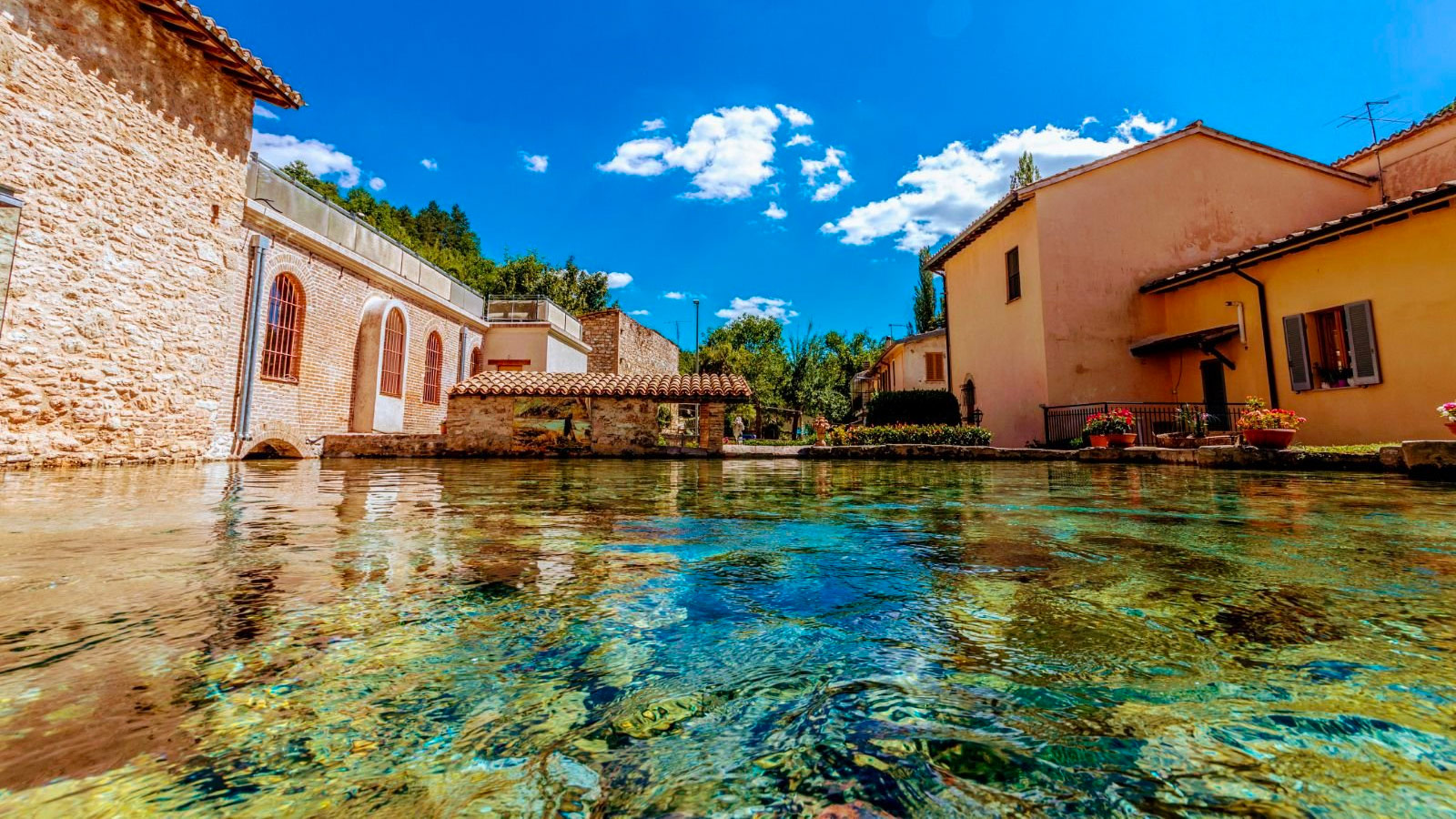Rasiglia is a mountain hamlet in the municipality of Foligno which rises over 600 meters above sea level, along the Sellanese state road 319, about 18 km from the city of Quintana.
The town, which preserves the typical characteristics of the medieval village gathered in an amphitheater structure, is famous above all for its springs: walking through the charming alleys of the center it is impossible not to be enchanted by the waterways that cross the town, making it unique and fascinating.
The source that feeds and flows through Rasiglia is that of Capovena: it is located in the upper part of the town, at the foot of the palace that the Trinci (lords of Foligno between 1305 and 1439) occupied at the time of their government over the Foligno territory, and which runs through the town forming streams and waterfalls which gather in a large basin called “Peschiera”, and then flow into the Menotre river.
The other sources are:
Alzabove, which arises under Mount Carosale which serves to feed the aqueduct of the southern Umbrian Valley.
Venarella, in front of the Rasiglia sports field, serves to supply the aqueduct for Verchiano
Le Vene, in the Chieve area.
The Vena Pidocchiosa, in the Pallailla area.
The Veins of Campolungo, in the Volperino ditch.
The origins of Rasiglia can be traced back as early as the 12th century, as attested by some ancient documents.
Its border position towards the Sellano territory and towards the diocese of Spoleto meant that the Trinci built one of the defensive structures there to make their borders safe and controllable: hence the Castrum et Roccha Rasilia.
The Rocca di Rasiglia originally occupied the entire top of the hill, with an almost rectangular shape, while currently sections of the surrounding walls and the ruins of a tower remain visible.
A mill, a fulling mill, some houses in the village were owned by the Trinci who, exploiting the precious presence of water, had started those activities which for centuries then guaranteed the survival of the entire community (mills and factories) thanks to the water power coming from the Menotre river.
Even today, the life of this splendid village continues to be marked by water: the element that passes through weaving, wool processing and dyeing which is revived through an ancient tradition, dating back to 1200.
In the surrounding area it is possible to visit the Ancient Sanctuary of Santa Maria delle Grazie and the Altolina Park, with a landscape rich in biodiversity: the Menotre Waterfalls and the Abbadessa Caves, of karst origin, with suggestive formations of stalactites and stalagmites.
Furthermore, every year two important events take place: the living nativity scene during the Christmas period and “Penelope a Rasiglia”, in June, dedicated to the ancient crafts of weaving.
Don’t miss this place far from time, with its magnetic and irresistible charm, where the thunderous murmur of the water accompanies every alley.
For more information:
www.rasigliaelesuesorgenti.com

